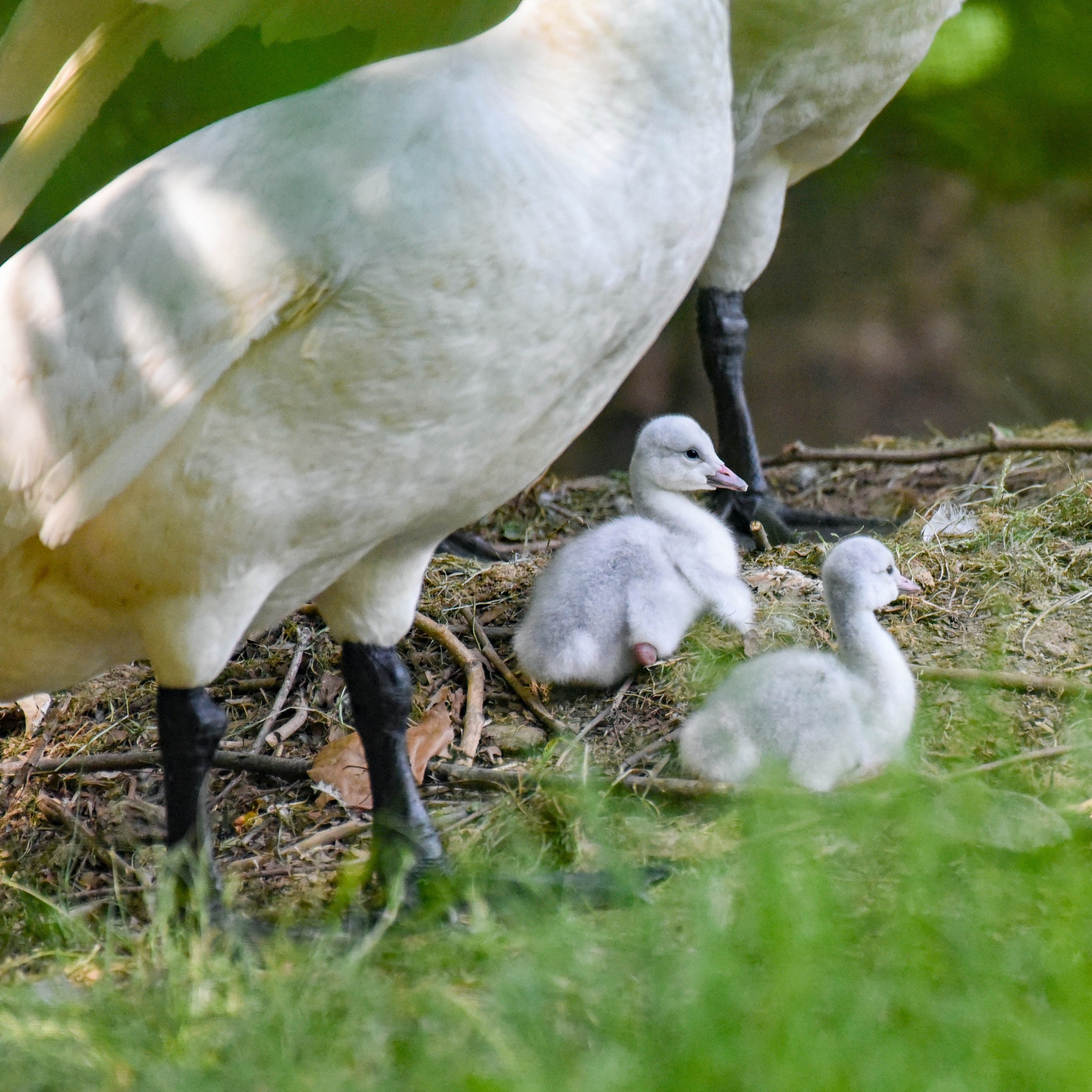- The biology of Trumpeter swans and swan cygnet development
- The synchronized hatching of Trumpeter swan cygnets and its ecological importance
- Zoo management’s role in Trumpeter swan conservation and public education
- The significance of live swan nest cams in wildlife observation and conservation awareness
- Challenges facing Trumpeter swans in the wild and efforts to protect them
Trumpeter swans are the largest native waterfowl in North America, renowned for their impressive size, stark white plumage, and resonant, trumpet-like calls. Once on the brink of extinction, these majestic birds have become a conservation success story, making the birth of swan cygnets an event of particular interest to scientific and public communities.
A fascinating aspect of Trumpeter swan biology is that cygnets typically hatch within 24 hours of the initial egg pipping. This is a prime example of the species’ reproductive strategy, ensuring the young are ready to face the world together and providing increased odds of survival in the challenging early days of life.
The synchronous hatching of Trumpeter swan cygnets is essential to their early development. Since swans are precocial, their young are comparatively mature and mobile shortly after hatching. The tightly grouped birth of the cygnets means that the entire brood is ready to leave the nest and follow their parents onto the water within a day or two, reducing their vulnerability to nest predators and exposure to the elements.
In zoo management, avian experts greatly facilitate the reproduction of Trumpeter swans. These professionals monitor the health of swans, their eggs, and the hatching cygnets, ensuring they create an environment similar to the swans’ natural habitat. This approach allows swans like those in the Farmyard pond to breed successfully, contributing to the species’ overall genetic diversity and population stability.
Swan nest live cams have become instrumental in allowing the public to witness these magical events and furthering conservation messages and educational outreach. By offering a real-time window into the lives of these birds, these cameras foster a connection between viewers and wildlife, encouraging a sense of responsibility and wonder in the natural world. Observing the development of swan cygnets via live cam can captivate audiences and elevate the profile of species needing protection.
Trumpeter swans face numerous challenges, including habitat loss, lead poisoning from ingested fishing tackle, and climate change. Organizations and wildlife agencies work tirelessly to secure protected wetlands, rehabilitate injured birds, and reintroduce swans to their historical range as part of broader conservation efforts.
These entities offer hope for Trumpeter swans and an inspiring example of how targeted conservation efforts can lead to the recovery of species once in peril. Each hatch of Trumpeter swan cygnets symbolizes the possibility of a sustainable future for wildlife in balance with human activity. Through observation, science, and dedication, we can contribute to the well-being of these incredible birds as they continue their journey, echoing the sound of progress with each trumpet call.
*****
Source Description
Fun fact! Trumpeter swan cygnets all typically hatch within 24 hours of the first egg pipping. We now have two cygnets down at the Farmyard pond! Visit the link in our bio to watch the swan nest live cam.


